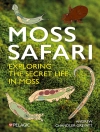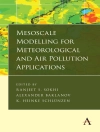This book is part of the 4-volumes collection of Atlas of Chinese Macrofungal Resources. This atlas documented 1819 species (or varieties) in 509 genera of macrofungi known from China, which are, according to their morphological characteristics, practically divided into 10 groups, including 196 larger ascomycetes, 21 jelly fungi, 47 coral fungi, 637 polyporoid, hydnaceous and lephoroid fungi, 11 cantharelloid fungi, 653 agarics, 130 boletes, 75 gasteroid fungi, 16 larger pathogenic fungi on crops, and 33 larger myxomycetes.
All species are evidenced with vouchers and photographs. About 370 of the listed species (occupying 1/5 of the total species) have their type localities in China, among which over 260 species (accounting for 1/7 of the species) were firstly discovered and published by the present authors. Some of the species are endemic to China and East Asia. Descriptions of all species are accompanied with color photographs showing their macro-morphology and (or) habitat. The macroscopic and microscopic diagnostic characters, ecological habits, economic importance (edibility, medicinal availability or toxicity) and geographical distribution in China of all species are described in brief and easy-to-understand style. In the guide, the characteristics and using method of the book, related mycological vocabulary, common taxonomic techniques and positions of the fungal genera in modern taxonomic system are briefly introduced.
The knowledge of this book should be interesting to mycologists, mycology fans and mushroom lovers, as well as researchers, teachers and students studying on edible fungi, plant pathology, healthcare and biomedicine sciences, bioresources and biodiversity, ecology and other related disciplines. It is an ideal reference for those who are interested in the Chinese macrofungi and larger slime molds.
In this first volume, it covers Macrofungal Ascomycetes, Jelly Fungi and Coral Fungi.
विषयसूची
Overview: Brief introduction to fungal atlases in China.- Overview: Position, classification and nomenclature of fungi among living organisms.- Overview: Geographical partition and distribution of fungal resources in China.- Overview: Collection of fungal resources.- Overview: Utilization of fungal resources in China.- Overview: Fungal taxa covered in this book.- Macrofungal Ascomycetes 1: Species with names beginning with A-H.- Macrofungal Ascomycetes 2: Species with names beginning with I-P.- Macrofungal Ascomycetes 3: Species with names beginning with R-X.- Jelly Fungi.- Coral Fungi.
लेखक के बारे में
Dr. Yu Li (1944-), academician of Chinese Academy of Engineering, professor and doctoral supervisor of Jilin Agricultural Agriculture, president of International Society of Medicinal Fungi, Honorary President of Chinese Association of Edible Fungi.
Dr Taihui Li (1959 -): Director of the Centre of Microbial Resources of South China in Guangdong Institute of Microbiology, research scientist, doctorial supervisor, vice president of Mycological Society of China from 2011 to 2017.
Dr. Zhuliang Yang (1963 -), research scientist of Kunming Institute of Botany, Chinese Academy of Sciences, doctorial supervisor, executive director of Key Laboratory of Plant Diversity and Biogeography in East Asia, Chinese Academy of Sciences, editor in chief of Fungal Diversity, deputy editor in chief of Mycosystema, vice president of Mycological Society of China and director of Professional Committee of Fungal Diversity and Phylogeny in thesociety, member of the Nomenclature Committee for Fungi (NCF), member of Fungal Specialist Group of Species Survival Commission (SSC), International Union for Conservation of Nature (IUCN).
Dr. Tolgor Bau (1962 -): foreign academician Mongolian Academy of Natural Sciences, distinguished professor of Ludong University, Taishan scholar, Professor of Jilin University of agriculture, doctoral supervisor, leader of the Doctorial Training Base of fungal crops, leader of the Innovation Team of the Ministry of Education, vice president of Mycological Society of China, editorial board member of Mycosystema and Journal of Fungal Research, mainly studies on the taxonomy of agarics and fungal biodiversity.
Dr. Yucheng Dai (1964 -): professor of Beijing University Forestry, doctorial supervisor, vice president of Forest Pathology lodge, Chinese Society of Forestry, chief editor of Mycosystema. He has made great contributions to the development of mycology, including discovering two new families, more than 20 new genera, and over 200 species, making 43 new combinations of fungal species, firstly explicating 52 new forest pathogenic fungi, 26 new edible and medicinal fungi, and 15 new fungal bioengineering strains, increasing the known Chinese lignicolous fungi up to more than 1200 species, making China become the country with the most known lignicolous fungi in the world.












